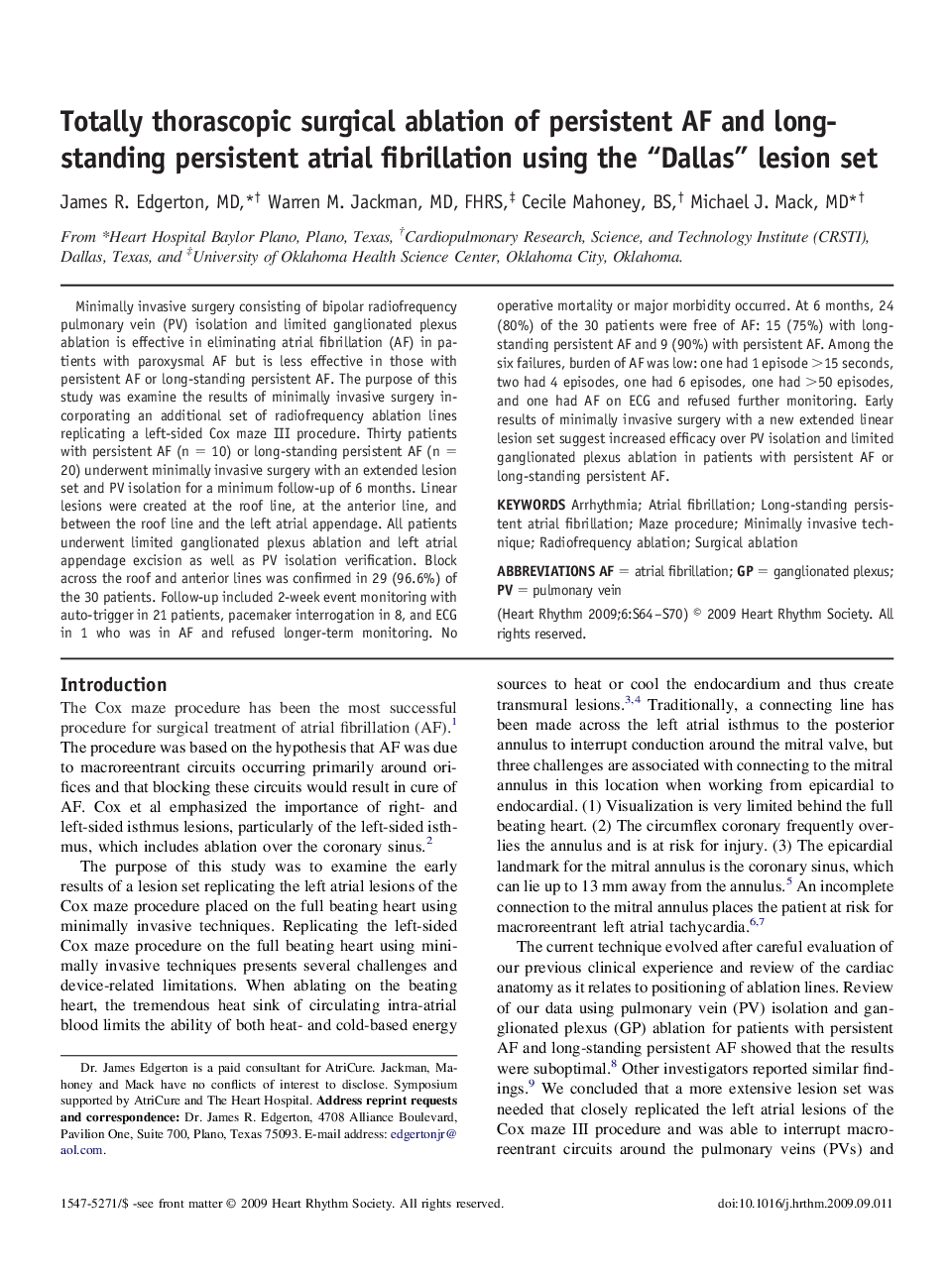| Article ID | Journal | Published Year | Pages | File Type |
|---|---|---|---|---|
| 2923593 | Heart Rhythm | 2009 | 7 Pages |
Minimally invasive surgery consisting of bipolar radiofrequency pulmonary vein (PV) isolation and limited ganglionated plexus ablation is effective in eliminating atrial fibrillation (AF) in patients with paroxysmal AF but is less effective in those with persistent AF or long-standing persistent AF. The purpose of this study was examine the results of minimally invasive surgery incorporating an additional set of radiofrequency ablation lines replicating a left-sided Cox maze III procedure. Thirty patients with persistent AF (n = 10) or long-standing persistent AF (n = 20) underwent minimally invasive surgery with an extended lesion set and PV isolation for a minimum follow-up of 6 months. Linear lesions were created at the roof line, at the anterior line, and between the roof line and the left atrial appendage. All patients underwent limited ganglionated plexus ablation and left atrial appendage excision as well as PV isolation verification. Block across the roof and anterior lines was confirmed in 29 (96.6%) of the 30 patients. Follow-up included 2-week event monitoring with auto-trigger in 21 patients, pacemaker interrogation in 8, and ECG in 1 who was in AF and refused longer-term monitoring. No operative mortality or major morbidity occurred. At 6 months, 24 (80%) of the 30 patients were free of AF: 15 (75%) with long-standing persistent AF and 9 (90%) with persistent AF. Among the six failures, burden of AF was low: one had 1 episode >15 seconds, two had 4 episodes, one had 6 episodes, one had >50 episodes, and one had AF on ECG and refused further monitoring. Early results of minimally invasive surgery with a new extended linear lesion set suggest increased efficacy over PV isolation and limited ganglionated plexus ablation in patients with persistent AF or long-standing persistent AF.
